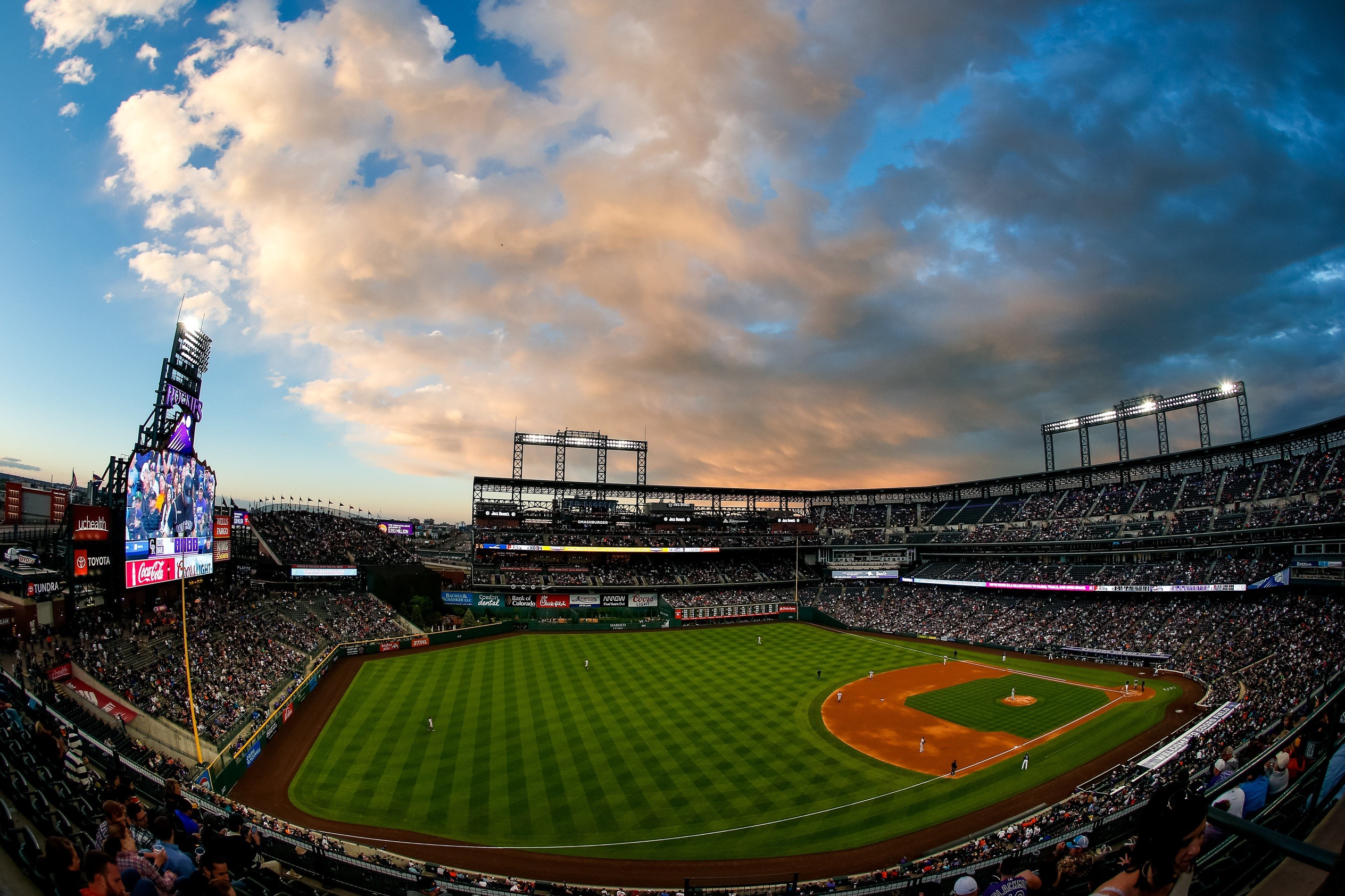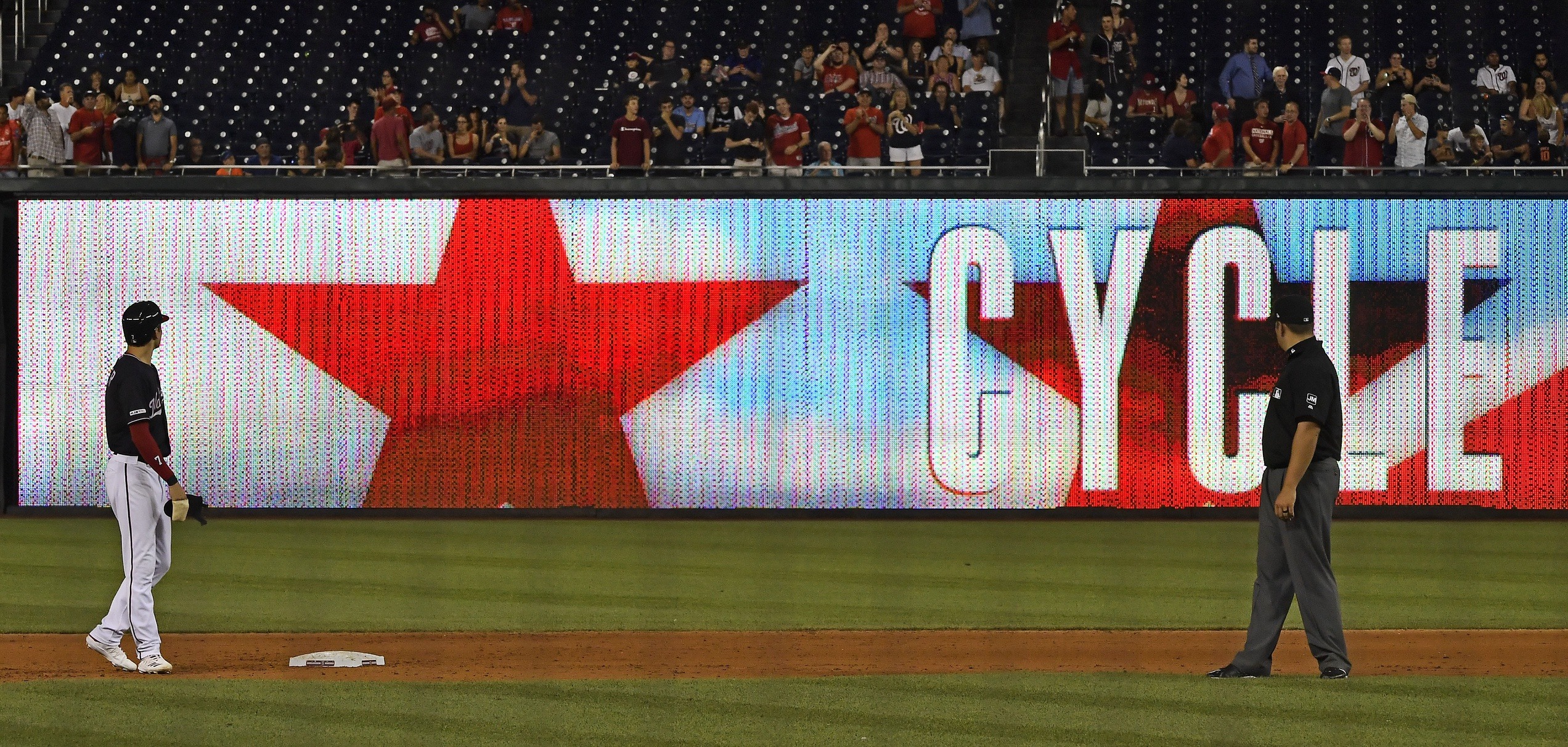© 2026 ALLCITY Network Inc.
All rights reserved.

The existence of Coors Field has been relatively short when compared to the lifespan of professional baseball.
While the same can certainly be said of most ballparks, the uniqueness of the grounds at 20th and Blake has made for some memorable moments in the grander sense.
Following construction of Oriole Park at Camden Yards in 1992, two-thirds of MLB clubs have had a new stadium erected. (In the case of those teams hailing from Texas and Atlanta, two have been built for each.) Among them was the ballpark in LoDo.
Despite this small share of the game’s history, Denver’s ball yard carries incredible weight when it comes to one of the rarer single-game accomplishments: hitting for the cycle.
Having a single, double, triple and home run – in any order – seems more coincidental than anything as it’s a total of 10 bases. But when you shred away the specifics of how a batter achieves those 10 total bases, it becomes much more common and less intriguing.
Since the start of the 1993 season when Colorado joined Major League Baseball, a player has hit for 10 total bases in a whopping 2,089 games. When adjusting for a player having four base hits in that game, it only reduces the occurrences to 1,090 times.
Hitting for the cycle, though, has occurred on just 334 occasions and 109 of them took place at one of the 30 ballparks in use today.
A total of 18 players have recorded a cycle at Coors Field, or 16.5% of those seen at active ballparks, most of any stadium all-time. In another perspective: that’s one more than Fenway Park and its 110 seasons.
Only Fenway and Wrigley Field have at least half as many as Coors Field. Next closest are a trio of stadiums – Angel Stadium of Anaheim, Minute Maid Park and U.S. Cellular Field – who have only a third to recollect.
Even amongst inactive stadiums, the Mile High City’s favorite cathedral is still tops. Forbes Field in Pittsburgh, home to 62 seasons of Pirates’ baseball, had only 12 (1909-1970). Same with Tiger Stadium for its 88 years of use from 1912-1999.

One of the key factors for permitting so many is the expansive area of grass in the outfield, largest in the NL. Coincidentally, Kauffman Stadium and its largest outfield in all of MLB has yet to see a cycle since the birth of Coors Field. (Last: Scott Cooper of the Boston Red Sox, Apr 12, 1994.)
The same year fans in Kansas City witnessed their last cycle was the first year Cleveland fans were introduced to Jacobs Field. Since the move to what is now called Progressive Field, the Guardians have endured the longest active drought among American League clubs. They have yet to experience one and are one of six active stadiums to be shutout.
Only the ballpark at the corner of Addison and Clark Street has waited longer. Mark Grace homered in his final plate appearance on May 9, 1993 to cap off the 10th cycle in Wrigley Field history. The Cubs may have won a World Series since then, but they’re still waiting for that next cycle.
You might say Coors Field is in a bit of a drought at the moment, going on three seasons without one. The longest spell sans cycle is between Apr 8, 2002 (Craig Biggio) to May 13, 2007 (Fred Lewis).
Petco Park, the oldest NL stadium yet to provide its fans a cycle in its 18 years of operation, has picked up where Jack Murphy Stadium, home for San Diego Padres for the club’s first 35 seasons, has left off. So, when Matt Kemp tripled off Justin Miller in the ninth-inning of a San Diego 9-5 win over Colorado on Aug 14, 2015, it was the first for the Friars’ franchise. After 47 years and 7,440 games, the Padres were finally on the board thanks to Coors Field.
The Miami Marlins have not been so lucky to be in the NL West and have the same access as the Padres, which may explain why they are the only team without a cycle.
And that’s not the only historic cycle witnessed by the impassioned wearers of purple.
Shin-Soo Choo become the first Korean-born player with a cycle on Jul 15, 2015 while with Texas. The first cycle in the ballpark’s history, achieved by John Mabry of the St. Louis Cardinals, was completed in his first four at bats, something only Comerica Park has ever witnessed among active stadia.
Even more so, Mabry’s feat was a natural cycle, occurring in the exact order of least bases to most: single, double, triple and home run.
By this criteria, the world has only seen 14 natural cycles. As such, its occurrence is even more rare than a perfect game, an event with only 23 instances. (The reverse natural cycle – home run, triple, double and single – has happened only five times. Perhaps it should be called the unnatural cycle.)
Colorado’s franchise has also had its share of special cycles.
Mike Lansing accomplished his the fastest coming in the first four innings on Jun 18, 2000. Michael Cuddyer joined Bob Watson and John Olerud on Aug 17, 2004 as players to hit for the cycle in both leagues. Carlos González capped his off with a walk-off homer. Quite possibly the most notable cycle of all-time, Nolan Arenado delighted the crowd on Father’s Day in 2017 with a walk-off grand slam.
(For those curious, three former Rockies achieved the feat while playing in Japan’s Nippon Professional Baseball: Kaz Matsui, Jun 7, 2000 for the Seibu Lions; José Ortiz, May 3, 2003 for the Orix BlueWave; and Alex Ochoa, Apr 13, 2004 for the Chunichi Dragons.)
No one hit for the cycle during the pandemic-shortened 2020 season for the first time since 1981, which also lost substantial games due to a players’ strike. (The last 162-game season to go without a cycle was 1967.)
Of the four players that accomplished the feat in 2021, Los Angeles Dodgers SS Trea Turner had the most historical relevance. Not only was he celebrating his 28th birthday with the Washington Nationals at that point, he recorded the third cycle of his career, tying him with Babe Herman, Bob Meusel and Adrián Beltré for most all-time.

“I think you got to get lucky to hit for a cycle,” Turner said humbly about his innate ability. “You got to get the right pitches, the right at-bats. You have to be able to square the ball four times, get four hits and hit for power. I think that’s something I’ve always strived for. So when those things happen, I feel like I’m in a good spot and I know what I’m doing is working.”
Luck-factor aside, the wherewithal of approaching a cycle would seem to be similar to a pitcher completely oblivious to an active no-hitter late in the game. However, that’s not the case.
“No. Because I always replay my at-bats in my head. So, ‘Oh this guy went fastball in the first at-bat.’ Things like that,” Turner said during the media availability at his first All-Star Week. “So, I’m usually pretty aware of what’s going on. And a lot of times your teammates are like, ‘You better do this, you better hit this.’ So they remind you and you’re aware of it.”
His first two came against the Rockies, one in D.C. and one in Denver, making him only the third player to hit two cycles against the same team. That first one was obviously memorable, but perhaps for all the wrong reasons.
“It was a miserable day. About 37 degrees and rainy. And I hate the cold. So I was miserable. But we got the win so it was fun,” Turner shared.
No matter how much Rockies fans may want to see their own pitcher throw only the second no-hitter in the stadium’s history, your odds to see a cycle are 18-times better at this point. Bet accordingly.
Comments
Share your thoughts
Join the conversation




